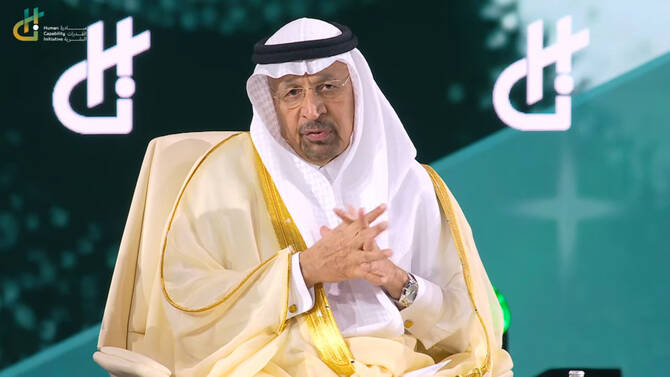RIYADH: Saudi Arabia is positioning itself as a global investment hub, not only due to its oil wealth or market size, but increasingly because of its expanding base of skilled human capital.
Speaking at the Human Capability Initiative in Riyadh, Minister of Investment Khalid Al-Falih said the Kingdom is entering a new phase where talent, rather than natural resources, is becoming the main driver of investment.
“The magnet for efficiency-seeking investment is talent,” Al-Falih said, highlighting a strategic shift toward capability-led growth.
He emphasized that investment and education must evolve in tandem, forming a mutually reinforcing cycle.
“Investments create a demand pull on skills development, which influences how universities, vocational schools, and individuals respond to market signals,” he explained. “That, in turn, builds a talent pool that becomes a magnet for further investment.”
The remarks reflect Saudi Arabia’s broader efforts to diversify its economy and build a knowledge-based future in line with Vision 2030.
According to Al-Falih, the Kingdom is already seeing results from this approach.
“If you see what we’ve done over the last 10 years in investment, our FDI has quadrupled in terms of flows, and our FDI stock has nearly doubled,” he said.
As a result, employment in foreign investment-backed companies has risen by 40 percent, and the number of Saudi nationals employed by these firms has doubled. Meanwhile, the number of investor licenses issued has increased nearly tenfold. The presence of regional headquarters has also surged—from just five prior to the launch of Vision 2030 to more than 600 today.
These figures, Al-Falih said, reflect growing global confidence in Saudi Arabia’s business environment and the evolution of its labor market.
Looking ahead, he predicted a significant shift in how the Kingdom is viewed by international investors.
“We have moved from a place where people looked at the Kingdom as a source for natural resources, to a place where they invest because of market, capital—and increasingly—talent,” he said.
With continued global partnerships and sustained investment in human capital, Al-Falih expressed confidence in the Kingdom’s future: “I predict that in the next decade, Saudi Arabia will be the destination for investment—a hub of local and international talent within an ecosystem that promotes continuous learning and future readiness.”
He also identified human skill development as a central pillar of the Kingdom’s national investment strategy, reinforcing its long-term vision of economic transformation.
“We see human skill development—from education to executive programs to vocational school—as one of our most important investment verticals,” he said.
Al-Falih pointed to Saudi Arabia’s growing ability to attract international academic institutions as evidence of this strategy, citing the newly announced investment license obtained by the University of New Haven as an example of targeted, strategic investment in education.
Beyond formal education, he called for a system that supports lifelong learning and personal growth.
“The half-life of the knowledge you learn from school is getting shorter and shorter,” he noted, stressing the importance of experiential learning and stronger collaboration with the private sector. He referenced global workforce development efforts such as IBM’s training initiatives as potential models.
Al-Falih also emphasized the importance of character-building and resilience in workforce development.
“Building the character of the individual is something that we as parents need to do from birth,” he said. “We need to follow it through the school, so making sure that teachers are able to build that human character and that resilience.”
He added that as modern careers continue to evolve, mobility across industries, organizations, and borders is becoming the norm.
“People are mobile across disciplines, but they’re also mobile across organizations, and they’re mobile across countries,” he said.
The HCI 2025 was launched on Sunday in Riyadh, bringing together more than 300 global leaders, policymakers, and experts from 120 countries to discuss the future of skills and human capability development.
Held under the patronage of Crown Prince Mohammed bin Salman, the event is organized by the Human Capability Development Program in partnership with the Ministry of Education. Under the theme “Beyond Readiness,” the second edition of HCI features over 100 panel discussions, a ministerial roundtable with 20 international ministers, and a series of strategic initiatives. It also marks the launch of Human Capability and Learning Week, running through April 16.




















